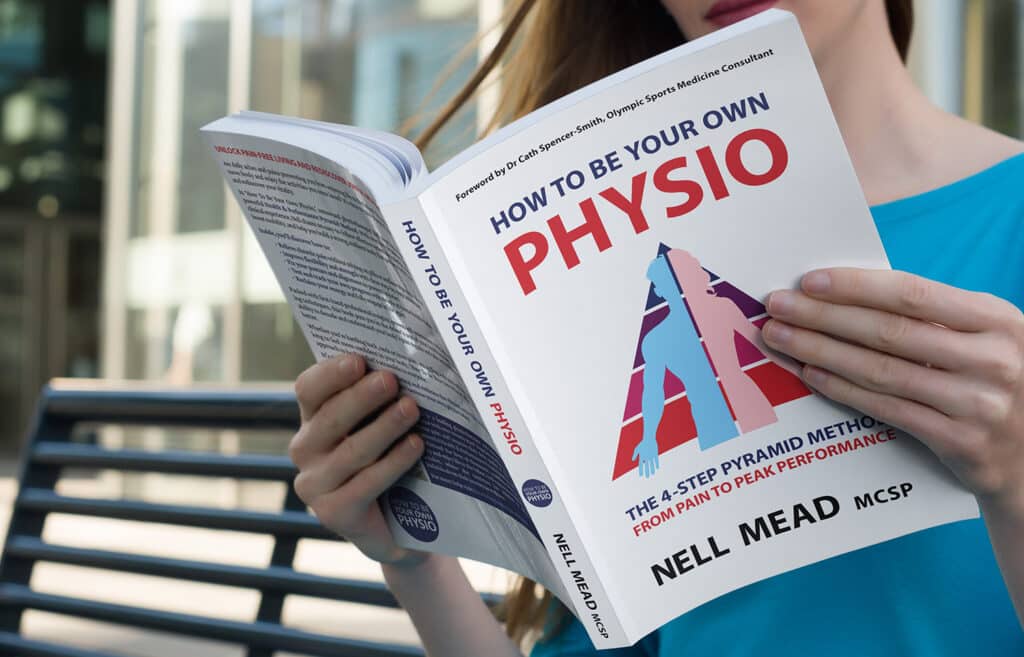Feet & Ankle Pain Case studies
Over the past 20 years as a physiotherapist, I've helped thousands of people recover from a wide variety of feet & ankle pain issues.
Dr Jones is a consultant radiologist who specialises in imaging musculoskeletal issues. She’s outstanding in her field, and if you have an inflamed patellar tendon or tennis elbow then you might well end up seeing her as she analyses it with her ultrasound machine.
So when she came to see me with a painful left ankle, I knew she would have investigated it herself first, and sure enough, she had self-diagnosed a badly-inflamed peroneal tendon, and had been to see another physio, whose ankle strengthening exercises had not helped. By this point, standing on her left foot was excruciating.
A quick bit of anatomy: the peroneal tendon runs down the outside of the ankle, attaching the outer part of the shin to the outer part of the foot. We usually think of it as a muscle which everts the foot, effectively pulling the little toe up and out.
When I assessed Dr Jones, I found several small issues. She had a small twist at the top of her neck, with her C2 bone slightly translated to the right. Her shoulder girdle was rotated to the left, as was her pelvis, and the arch of her left foot was slightly collapsed. All of these minor issues worsened when I made her stand on her left foot.
I tried correcting Dr Jones’ foot position, and then her pelvis, but it wasn’t until I corrected her neck position that her body suddenly relaxed and realigned itself, and she suddenly stood on her left foot with confidence, without pain and without holding her breath.
She stared at me. “Wow!” she said. “What did you just do?”
Now, there are many possible explanations as to how an upper neck problem could affect your ankle; but the most plausible for me was that Dr Jones’ C2 was sliding to the right, and taking her head with it. Heads are heavy (most weighing around 5kg) and so this would pull her off balance.
In a non-weightbearing position, as I explained above, the peroneal tendon is an everter of the foot, pulling it up and out, as the insertion in the outside of the foot moves towards the origin in the outer shin. However, in a weightbearing position, the foot cannot move up and out as it is attached to the floor, so when the peroneal tendon is activated, it pulls the outer shin towards the outer foot.
Over time, Dr Jones’ left peroneal tendon had become the way she compensated, as her body fell to the right, following her head. She was effectively using her peroneals as a crutch. The peroneal muscles can cope with doing this once in a while, but they’re not designed to do this all the time, so my hypothesis was that, over time, her peroneal tendon had become overloaded, fatigued, inflamed and eventually painful.
Surprisingly, after treating her neck for just 10 minutes, I was able to touch and wiggle Dr Jones’ left ankle, and to work around her peroneal tendon in a way nobody had been able to do for the previous few months (it was important to do this, partly because it reinforced her belief in the treatment on her neck; but also because I wanted to reassure her nervous system that moving her ankle was a safe and normal thing to do, to give her confidence in her ankle; and to remind her peroneal tendon how to glide and move normally, and to reduce any inflammation and adhesions.)
Dr Jones quickly decided that she had to “leave her doctor’s hat at the door” when she came to see me. Intellectually, it didn’t make total sense to her that her neck would cause her ankle pain; but her body told her otherwise. So she worked hard at her neck posture, and in fact within 4 sessions I was able to discharge her from physio to rehab, so that she could go and work with a rehab team to strengthen her peroneals while (crucially) maintaining good neck posture.
Quick Links
Address
Longcroft House
2-8 Victoria Ave
London
EC2M 4NS
Are you tired of quick fixes that leave you back at square one? Ready to take control of your health with evidence-based strategies?
My book isn’t just another health tome – it’s your ticket to understanding your body and conquering both niggles and long-standing symptoms.
